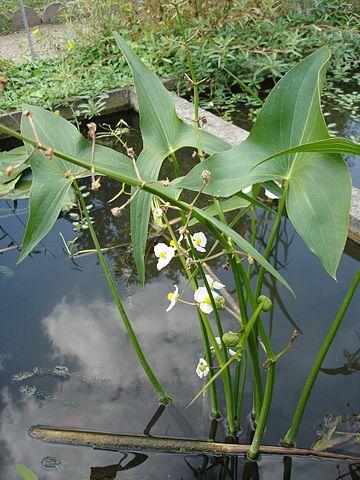Sagittaria latifolia
Sagittaria latifolia Willd. is a semiaquatic perennial with distinctive arrow shaped leaves and starchy tuber-bearing rhizomes. Found throughout the United States and southern Canadian provinces, wapato prefers slow moving water. The plant produces ovoid tubers 1 to 3 cm in diameter from the horizontally creeping rhizomes. These tubers are very starchy and produce many starch grains.
Historically, wapato was collected by wading and dislodging tubers wither with feet or digging sticks. Tubers were usually steamed in pits or boiled. They could also be roasted in hot ashes quickly to eliminate the bitter taste. Wapato tubers were then dried and stored in baskets or underground pits. Archaeologically, Hoffman et al. (2016) and Lyons et al. (2018) documented an engineered wapato garden in the Fraser River Delta dated to 3800 BP. Their excavations revealed a submerged rock pavement of fire modified rock and rounded cobbles designed to create readily available and predicable wapato harvests.
People still harvest wapato today! Check out these recent harvests to learn more. Alexis Nicole offers some cooking tips.
Shallow and slow moving water, or along the edges of lakes and rivers. Common throughout North and Central America.







